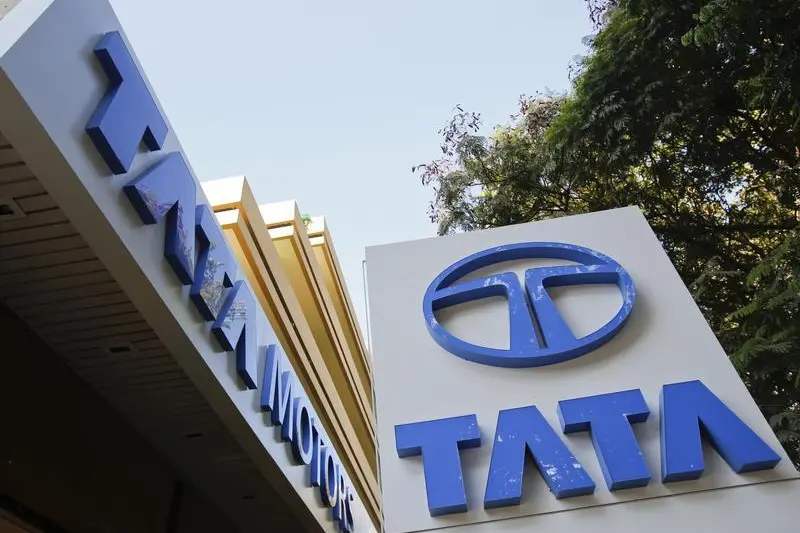PHOTO
MUMBAI - The Tata group is speeding along the road to redemption. Natarajan Chandrasekaran has moved swiftly since taking over as chairman of the sprawling Indian retail-to-salt conglomerate in February, tying up loose ends in steel and telecoms and reducing cross-shareholdings. Reviving the money-losing Indian operation of its $21 billion Tata Motors offshoot may be the toughest challenge. Even here, though, there are signs of improvement.Chandra, as he is widely known, is hiving off Tata Steel’s ailing European operations into a joint venture with Germany’s ThyssenKrupp and has paid Japan’s NTT Docomo a $1.2 billion settlement after a telecoms partnership went wrong. Revenue growth is muted at its crown jewel, IT-outsourcing giant Tata Consultancy Services, but TCS’s problems are shared across its local peers.
Mumbai-listed Tata Motors stands out. It has an unusual model. All of its profit comes from overseas operations led by Jaguar Land Rover, the group of luxury British marques acquired in 2008. That business has little in common with the domestic operations, which on Thursday reported an after-tax loss of almost 3 billion rupees ($45 million) in the quarter to the end of September.
At less than half the loss a year earlier, that’s a step forward. After losing market share in India for years, Tata Motors’ sales of passenger and commercial vehicles in September were at their highest level since peaks in November 2012 and June 2014. Costs still need attention too: every single passenger car loses money, as Chandra candidly admitted earlier this year. Another problem that will take time to fix is the perception that Tata’s cars are "cheap", something that has stuck ever since the launch of the ultra low-cost Nano in 2009.
The Indian company’s stock price has started to rise in recent months but remains 7 percent lower than at the start of the year. Maruti Suzuki, which is more focused on passenger cars, has seen its shares rise more than 50 percent over the same period. Chandra has shown confidence in a turnaround, with the parent group inching up its direct stake. Tata Motors’ Indian business may finally be on the long road home.
CONTEXT NEWS
- Tata Motors on Nov. 9 reported a nearly threefold rise in quarterly profit, helped by higher sales from its Jaguar Land Rover business.
- The company reported 24.8 billion rupees ($382 million) of net profit attributable to shareholders for the three months to Sept. 30, compared with 8.3 billion rupees in the same period a year ago.
- Analysts on average expected a net profit of 15 billion rupees, according to Thomson Reuters data.
(Reporting by Una Galani; editing by Richard Beales and Bob Cervi)
© Reuters News 2017
Mumbai-listed Tata Motors stands out. It has an unusual model. All of its profit comes from overseas operations led by Jaguar Land Rover, the group of luxury British marques acquired in 2008. That business has little in common with the domestic operations, which on Thursday reported an after-tax loss of almost 3 billion rupees ($45 million) in the quarter to the end of September.
At less than half the loss a year earlier, that’s a step forward. After losing market share in India for years, Tata Motors’ sales of passenger and commercial vehicles in September were at their highest level since peaks in November 2012 and June 2014. Costs still need attention too: every single passenger car loses money, as Chandra candidly admitted earlier this year. Another problem that will take time to fix is the perception that Tata’s cars are "cheap", something that has stuck ever since the launch of the ultra low-cost Nano in 2009.
The Indian company’s stock price has started to rise in recent months but remains 7 percent lower than at the start of the year. Maruti Suzuki, which is more focused on passenger cars, has seen its shares rise more than 50 percent over the same period. Chandra has shown confidence in a turnaround, with the parent group inching up its direct stake. Tata Motors’ Indian business may finally be on the long road home.
CONTEXT NEWS
- Tata Motors on Nov. 9 reported a nearly threefold rise in quarterly profit, helped by higher sales from its Jaguar Land Rover business.
- The company reported 24.8 billion rupees ($382 million) of net profit attributable to shareholders for the three months to Sept. 30, compared with 8.3 billion rupees in the same period a year ago.
- Analysts on average expected a net profit of 15 billion rupees, according to Thomson Reuters data.
(Reporting by Una Galani; editing by Richard Beales and Bob Cervi)
© Reuters News 2017












